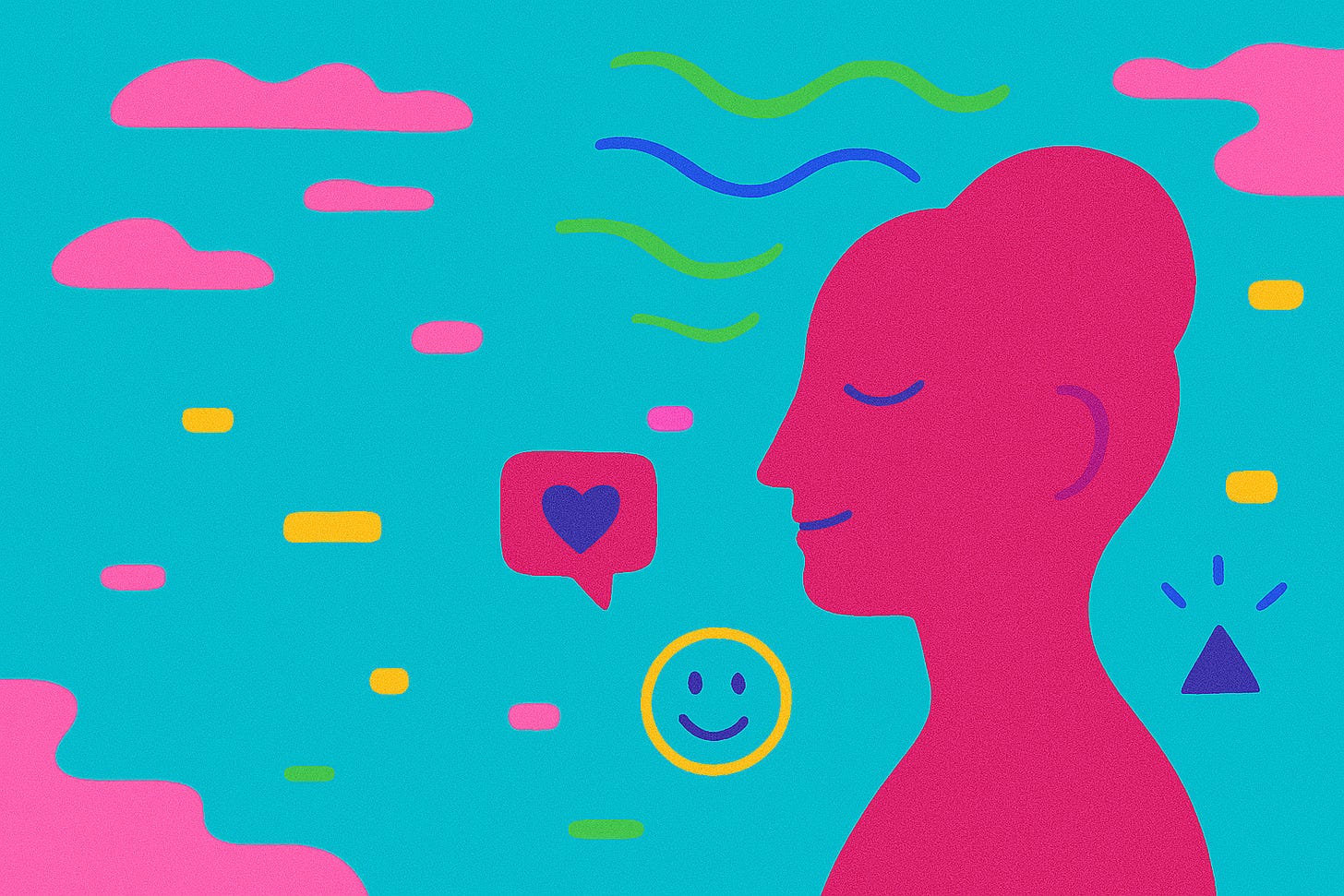Beyond the Buzzword: Why "Vibe Coding" Matters Right Now
It's more than just slang – "vibing" reflects how we're navigating the messy, exciting reality of AI integration.
Have you noticed "vibing" cropping up everywhere lately? It started subtly, maybe with "vibe coding," but this past week alone, I stumbled upon "vibe marketing" and even saw demos of "vibe drawing." Just today I was talking to an engineering lead, and after rescheduling a meeting, casually responded, "k... I'll continue vibe coding."
This goes deeper than just a fleeting internet trend or a fun phrase to toss around (though it is fun). I believe "vibing" is becoming a surprisingly accurate label for how many of us are grappling with the rapid advance and integration of AI into our daily life and work. Why does this matter now? Because AI isn't just another tool; it's fundamentally reshaping how we work, what we create, and the very processes we rely on. Leaning into a "vibe" helps us make sense of the ambiguity we're all facing.
So, why the sudden surge of "vibing"? I think it boils down to a couple of key factors driven by AI's current state:
1. We're Charting Undiscovered Workflow Territories
AI tools are powerful, potentially revolutionary, but let's be honest: we're still figuring them out.
Existing workflows are being disrupted: Users aren't entirely sure how to seamlessly slot AI into the ways they've always done things. Should AI assist, augment, or completely replace steps?
New workflows haven't solidified: It's so early that the optimal new AI-native workflows haven't been established yet. Best practices are still emerging.
We're collectively in a massive learning phase. Without a clear map, we're relying on intuition, experimentation, and well, vibes, to navigate how to best use these new capabilities. "Vibing" becomes shorthand for exploring these uncharted territories.
2. The Goalposts Themselves Are Shifting
It’s not just how we do things that’s changing; AI is unlocking entirely new potential outputs and capabilities. We're realizing we can create things or achieve results previously unimaginable or impractical.
This creates a double dose of uncertainty: We're simultaneously reinventing the process (how to get there) and the destination (what we're even trying to achieve).
Think about it: AI is pushing boundaries across multiple dimensions – enabling tasks to be done cheaper, faster, and often with surprising quality improvements, forcing us to reconsider what's possible and what goals are worth pursuing.
Embracing the "Vibe"
In this context, "vibing" feels less like a lack of direction and more like an active, necessary state of exploration. It’s our way of collectively throwing our hands up and acknowledging, "We don't know exactly what we're doing, or even what the final destination looks like... but we're leaning in, experimenting, and figuring it out as we go."
And honestly? I'm here for it. This phase of messy, intuitive exploration is crucial. It’s where breakthroughs happen, born from trying things that aren't in any manual yet.
This feeling of navigating ambiguity might just be the defining characteristic of working with powerful, rapidly evolving technologies like AI today. It requires a different kind of skill set, one that values intuition and adaptation alongside structured processes.
For now, embracing the "vibe" seems like a healthy, even productive, way to approach the exciting, uncertain landscape shaped by AI. It’s about staying flexible, curious, and willing to learn through doing, even when the path isn't perfectly clear.
What do you think? Are you feeling the "vibe" in your own work or projects as you integrate AI?




True, can't miss "vibing" at all. I think it's more of a linguistic drift, where a vague term has become a placeholder for more specific discussions about workflows and goal definitions.